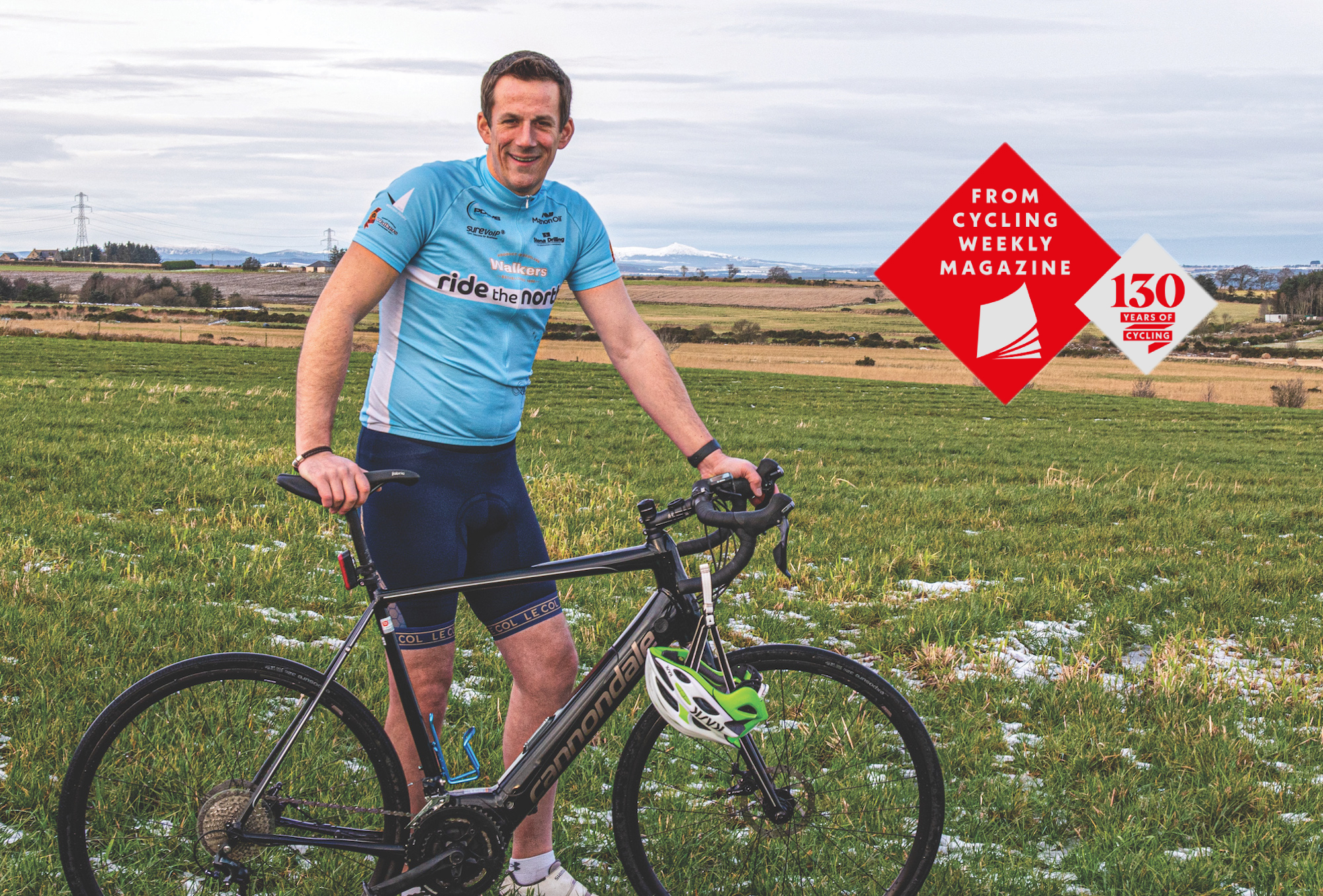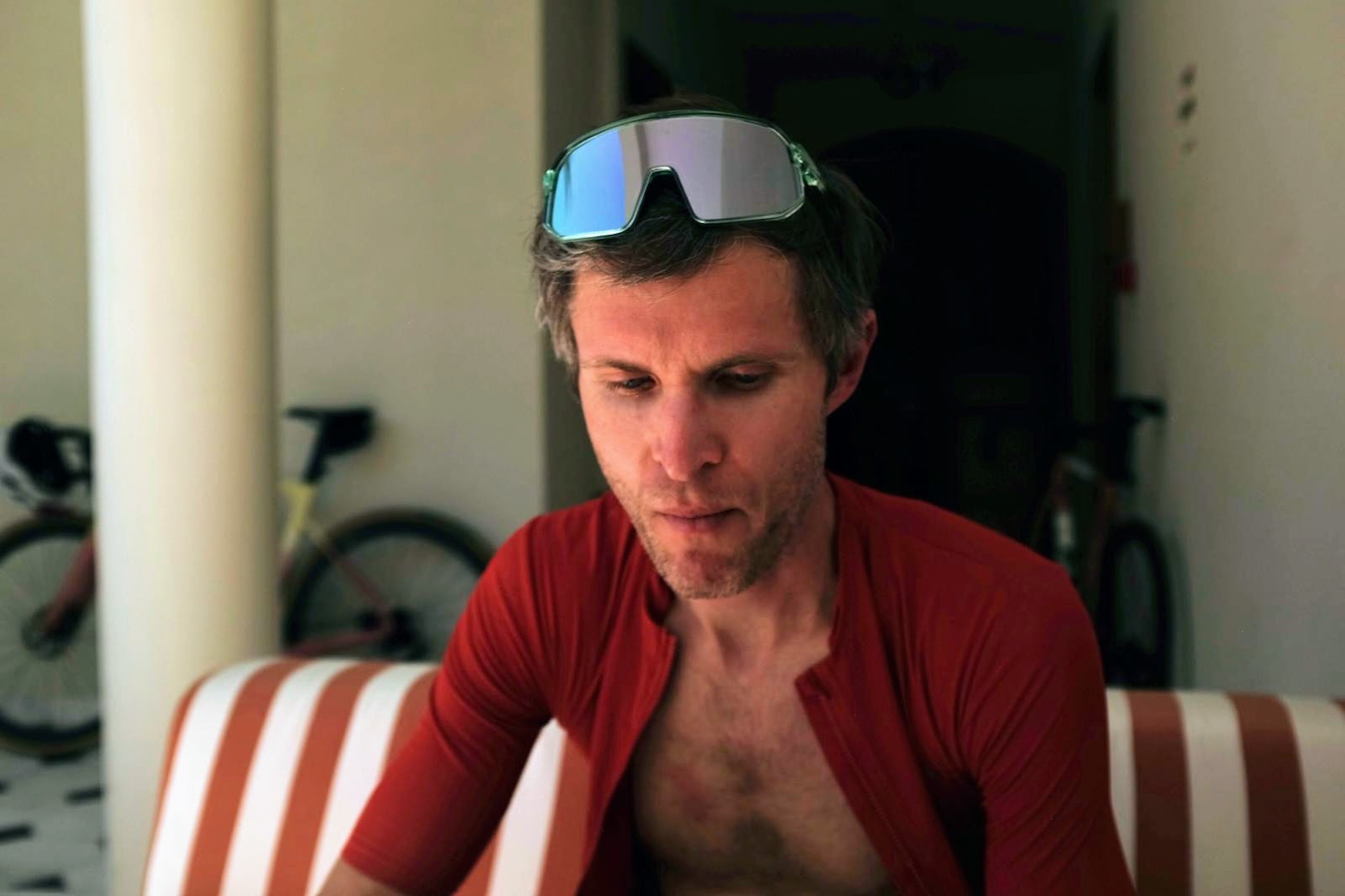'There had been some warning signs': The ride that changed one cyclist's life forever
One fine day last spring, Damien Bird set out on a ride that would change his life forever. Here, he tells us what happened and why he’s thankful to be back on two wheels

Damien Bird (Brian Battensby)

"There had been some warning signs," says Damien Bird, speaking to me from his hilltop home near Stonehaven in Aberdeenshire. “In November 2019 I was doing a cross-country run when, a few kilometres from the end, I started feeling dizzy and light-headed.”
Bird was 38 at the time, and with a lifetime of sport behind him, including frequent cycling for the past six years, he wasn’t about to let a spate of wooziness hold him back. In fact, he had just bought his first high-spec road bike, a Di2-equipped Boardman SLR 9.6, and was looking forward to a big year of cycling in 2020. Even so, he played it safe and went to his GP to get checked over.
“The doctor did an ECG and said ‘Yes, there are some irregular rhythms but nothing to worry about, we’ll get you referred’. He stressed that the benefits of exercise outweigh the risks – I was fine to keep cycling as long as I didn’t overdo it.”
In January 2020, Bird underwent further heart tests, followed by the Bruce protocol – ECG while running on a treadmill as the incline is incrementally ramped up – which he sailed through without his heart missing a beat. The next step would be a 24-hour ECG. In the meantime, blood tests had revealed he was deficient in iron and had coeliac disease – both of which came as a complete surprise.
“All these things were going through my head,” Bird recalls. “I thought, OK, maybe we’ve found the problem – my scatty heart is due to lack of iron.”
>>> Subscriptions deals for Cycling Weekly magazine
Now gluten-free and getting his iron levels back on track, Bird was hopeful the dizzy spells and bumpy heart rhythms would soon be smoothed out. Back on his bike, he was making the most of springtime, commuting and riding for fun – until one day in April.
Get The Leadout Newsletter
The latest race content, interviews, features, reviews and expert buying guides, direct to your inbox!
“It was just another evening,” Bird remembers. “I’d done the same route the night before with the kids. This time I was on my own, and seven kilometres into the 10-kilometre loop experienced a dizzy spell, but being so close to home I kept plugging on.”
He still doesn’t know what happened next. His memory jump-cuts to waking up lying in the road, in agony. “My glasses were broken, I was still attached to my bike, and squealing out in pain. I had no idea what had happened to me; just total shock.”
Falling unconscious off a bike is very different from crashing in the ordinary way: you can’t brace yourself or even put out your hands to break the fall.
“You’ve heard the expression doing a silly salmon?” asks Bird. “I’d gone head-first like a fish off the bike. My helmet was smashed, my shoulder badly injured, and I’d later find out I had a lacerated liver and contusion of the lung.” Thankfully he had his phone in his pocket and was able to call for an ambulance.
Confined to hospital for the next three weeks, Bird underwent a panoply of tests to find out why he had lost consciousness. It was a lonely and anxious time, as lockdown restrictions forbade visits from his wife and three young children. The tests showed some thickening and scarring in his heart: not enough for a firm diagnosis, but doctors’ best guess was arrhythmogenic right ventricular cardiomyopathy (ARVC, see below), and so to guard against future risk they implanted a cardioverter defibrillator (ICD). Only months later did Bird have the cause of his crash confirmed. “It wasn’t until August that the consultant informed me in writing that I had most likely had a cardiac arrest,” he says. “I was pretty shocked to read that in a letter.”
Since that letter, there has been little progress. Genetic tests and a heart biopsy have both come back negative for ARVC, and all Bird can do for now is focus on the bigger picture. “Four out of five people with this condition are diagnosed on the slab,” he says, with ambivalent relief. “I was one of the lucky ones who survived.”
The absence of a confirmed diagnosis has left him with lingering uncertainty. “It’s pretty depressing,” Bird says. “I haven’t been given any instructions on what heart rate zones to work within. I’ve only been told not to go above an intensity where I’m still able to talk.”
>>> Cycling Weekly is available on your Smart phone, tablet and desktop
Accepting that strenuous effort is off the menu, Bird sold his Boardman and replaced it with a Cannondale Synapse e-bike. Back on the road, though his exertions may be less intense, the Aberdeenshire scenery is as beautiful as ever – and he soaks it up, a blessed second chance, as the electric motor takes the strain. “I bought this bike two months ago, and that first ride was such utter relief,” he enthuses. “To escape the pressures of work and be back on a bike, I was just grinning for the full 50km.”
This much I’ve learnt
Be thankful: NHS doctors, nurses and ancillary staff work really hard, caring, cleaning and providing.
Accept it: Don’t worry about chasing those PBs. Concentrate on what you can do, not on what you can’t. Adapt and appreciate.
A problem shared is a problem halved: Reaching out to groups, fellow cyclists, friends and family has helped me overcome my fears and to stay mentally strong.
What is ARVC?
Consultant cardiologist Dr Mark Dayer talks us through the suspected cause Arrhythmogenic right ventricular cardiomyopathy (ARVC) has a prevalence of about one in 5,000 in the UK, and is now more correctly known as arrhythmogenic cardiomyopathy (ACM). It is a disorder that affects, most commonly, the right ventricle – the pumping chamber on the right side of the heart. In this disorder, fat or scar tissue gradually replaces muscle, making life-threatening heart rhythm problems more common, as well as weakening the heart.
Exercise can raise the risk of heart rhythm problems, and ARVC can be hard to diagnose, especially in athletes – great care must be taken when making a diagnosis. Those who are diagnosed with ARVC need careful follow-up, screening of other family members, and sometimes an implanted pacing device. How much exercise is too much? Unfortunately, there are no clear answers.
This feature originally appeared in the print edition of Cycling Weekly, on sale in newsagents and supermarkets, priced £3.25.
You can subscribe through this link here.
That way you’ll never miss an issue.

Thank you for reading 20 articles this month* Join now for unlimited access
Enjoy your first month for just £1 / $1 / €1
*Read 5 free articles per month without a subscription

Join now for unlimited access
Try first month for just £1 / $1 / €1

David Bradford is features editor of Cycling Weekly (print edition). He has been writing and editing professionally for more than 15 years, and has published work in national newspapers and magazines including the Independent, the Guardian, the Times, the Irish Times, Vice.com and Runner’s World. Alongside his love of cycling, David is a long-distance runner with a marathon PB of two hours 28 minutes. Having been diagnosed with retinitis pigmentosa (RP) in 2006, he also writes about sight loss and hosts the podcast Ways of Not Seeing.
-
 'This is the marriage venue, no?': how one rider ran the whole gamut of hallucinations in a single race
'This is the marriage venue, no?': how one rider ran the whole gamut of hallucinations in a single raceKabir Rachure's first RAAM was a crazy experience in more ways than one, he tells Cycling Weekly's Going Long podcast
By James Shrubsall
-
 Full Tour of Britain Women route announced, taking place from North Yorkshire to Glasgow
Full Tour of Britain Women route announced, taking place from North Yorkshire to GlasgowBritish Cycling's Women's WorldTour four-stage race will take place in northern England and Scotland
By Tom Thewlis